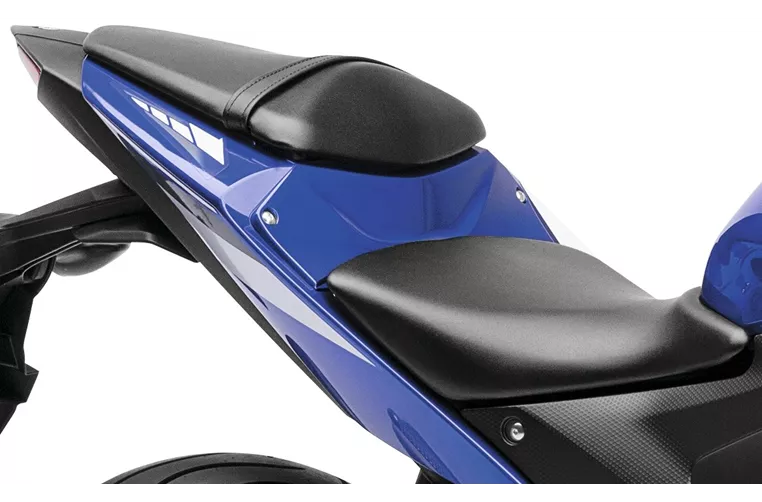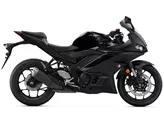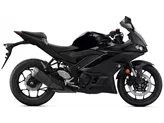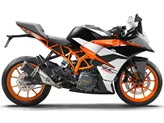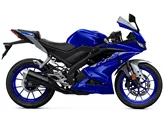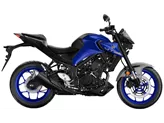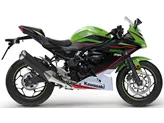Yamaha R3 2015 vs. Kawasaki Ninja 400 2018

Yamaha R3 2015

Kawasaki Ninja 400 2018
Pregled - Yamaha R3 2015 vs Kawasaki Ninja 400 2018
When comparing the Yamaha YZF-R3 2015 and the Kawasaki Ninja 400 2018, several factors come into play. Starting with the technical specifications, the Yamaha YZF-R3 has a bore of 68 mm and a stroke of 44.1 mm, while the Kawasaki Ninja 400 has a slightly larger bore of 70 mm and stroke of 51.8 mm. This difference in dimensions may result in variations in performance and engine characteristics.
In terms of engine power, the Yamaha YZF-R3 boasts 42 HP, while the Kawasaki Ninja 400 offers a slightly higher output of 45 HP. Similarly, the torque figures for the Yamaha YZF-R3 stand at 29.6 Nm, whereas the Kawasaki Ninja 400 delivers a higher torque of 38 Nm. These differences in power and torque may affect the overall performance and acceleration of the motorcycles.
Both motorcycles feature a 2-cylinder engine with 4 valves per cylinder and a similar displacement, with the Yamaha YZF-R3 having a displacement of 321 ccm and the Kawasaki Ninja 400 having a displacement of 399 ccm. The compression ratios are also comparable, with the Yamaha YZF-R3 at 11.2 and the Kawasaki Ninja 400 at 11.5. These similarities in engine specifications suggest that both motorcycles are designed to deliver a similar level of performance.
Moving on to the chassis, the Yamaha YZF-R3 features a Twin Tube frame type, while the Kawasaki Ninja 400 utilizes a Tubular frame type. This difference in frame design may result in variations in handling and stability. Additionally, the Kawasaki Ninja 400 boasts a low weight, which contributes to its effortless handling and maneuverability.

Yamaha R3 2015
Both motorcycles are equipped with single disk brakes at the front, ensuring reliable stopping power. They also come with advanced rider assistance systems, including ABS, which enhances safety and control while riding.
In terms of dimensions and weights, the Yamaha YZF-R3 and the Kawasaki Ninja 400 have similar front tire widths of 110 mm and front tire diameters of 17 inches. However, the Kawasaki Ninja 400 has a slightly wider rear tire width of 150 mm compared to the Yamaha YZF-R3's 140 mm. Both motorcycles have the same rear tire diameter of 17 inches.
The wheelbase of the Yamaha YZF-R3 measures 1380 mm, while the Kawasaki Ninja 400 has a slightly shorter wheelbase of 1370 mm. The seat height of the Yamaha YZF-R3 is 780 mm, while the Kawasaki Ninja 400 offers a slightly higher seat height of 785 mm. These differences in dimensions may affect the overall ergonomics and riding position of the motorcycles.

Kawasaki Ninja 400 2018
In terms of weight, the Yamaha YZF-R3 has a kerb weight of 169 kg with ABS, while the Kawasaki Ninja 400 weighs slightly less at 168 kg with ABS. The fuel tank capacity for both motorcycles is the same at 14 liters.
When it comes to strengths, the Yamaha YZF-R3 is praised for its transparent and precise front, strong brakes, lively engine, sensational top speed, and relaxed geometry. On the other hand, the Kawasaki Ninja 400 is commended for its chassis suitable for sporty use, low weight and effortless handling, engine with smooth response, relaxed and confidence-enhancing seating position, and LED headlights.
However, the Yamaha YZF-R3 does have some weaknesses, including some unattractive parts and a high price. Similarly, the Kawasaki Ninja 400 has its own drawbacks, such as non-adjustable brake and clutch levers and an enormously loud wind noise with the original windshield for riders over 180 cm tall.
In conclusion, the Yamaha YZF-R3 2015 and the Kawasaki Ninja 400 2018 are both impressive motorcycles in their own right, offering a blend of performance, handling, and safety features. While the Yamaha YZF-R3 may have a slight advantage in terms of engine power, the Kawasaki Ninja 400 excels in terms of its chassis design and overall handling characteristics. Ultimately, the choice between these two motorcycles will depend on the rider's preferences and priorities.
Tehnične specifikacije Yamaha R3 2015 v primerjavi z Kawasaki Ninja 400 2018
Primerjava prednosti in slabosti
Primerjava prednosti in slabosti
Yamaha R3 2015
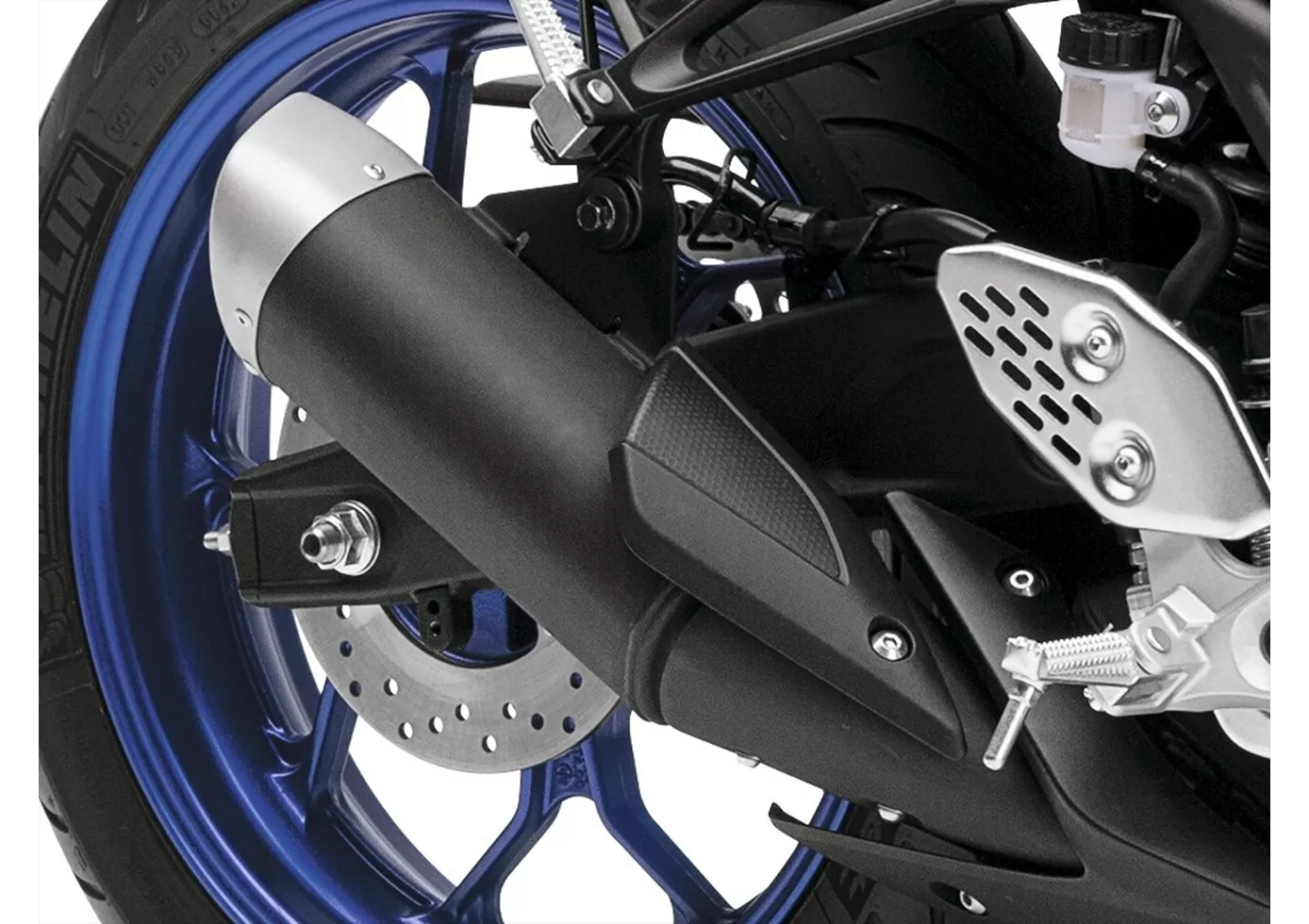
Yamaha vidi svoj R3 bolj v skladu z enako vsestranskim Kawasakijem Ninja 300, vendar je cena še višja kot pri KTM390. Zaradi tega je YZF-R3 premijski izdelek, kar je v tem razredu drzna odločitev. Toda celoten paket ponuja ustrezno vrednost: športni motor, stabilno podvozje, močne zavore, senzacionalna najvišja hitrost. Neposredna primerjava bo pokazala, kdo ima resnično prednost. V vsakem primeru je R3 vroč kandidat za prvo mesto.
Kawasaki Ninja 400 2018

Če povzamemo, lahko Ninja 400 označimo kot popoln vstop v svet superšportnikov. Z A2 ne morete dobiti večje moči, videz nakazuje veliko večjo moč, vozilo je igrivo za vožnjo, je v vseh pogledih prizanesljivo in še vedno omogoča resnično športen slog vožnje. Tisti, ki so imeli upravičene pomisleke glede pomanjkanja moči pri različnih 250-kubičnih strojih, zdaj nimajo več izgovorov. Ninja 400, dobro, da te imamo!
Primerjava povprečnih tržnih cen Yamaha R3 vs Kawasaki Ninja 400
There are a few key differences between a Yamaha YZF-R3 2015 and a Kawasaki Ninja 400 2018. It takes less time to sell a Kawasaki Ninja 400 with 105 days compared to 110 days for the Yamaha YZF-R3. Since model year 2015 1000PS.de editors have written 11 reviews for the Yamaha YZF-R3 and 9 reviews for the Kawasaki Ninja 400 since model year 2018. The first review for the Yamaha YZF-R3 was published on 10/17/2014 and now has more than 53,600 views. This compares to more than 44,300 views for the first review on Kawasaki Ninja 400 published on 11/22/2017.
